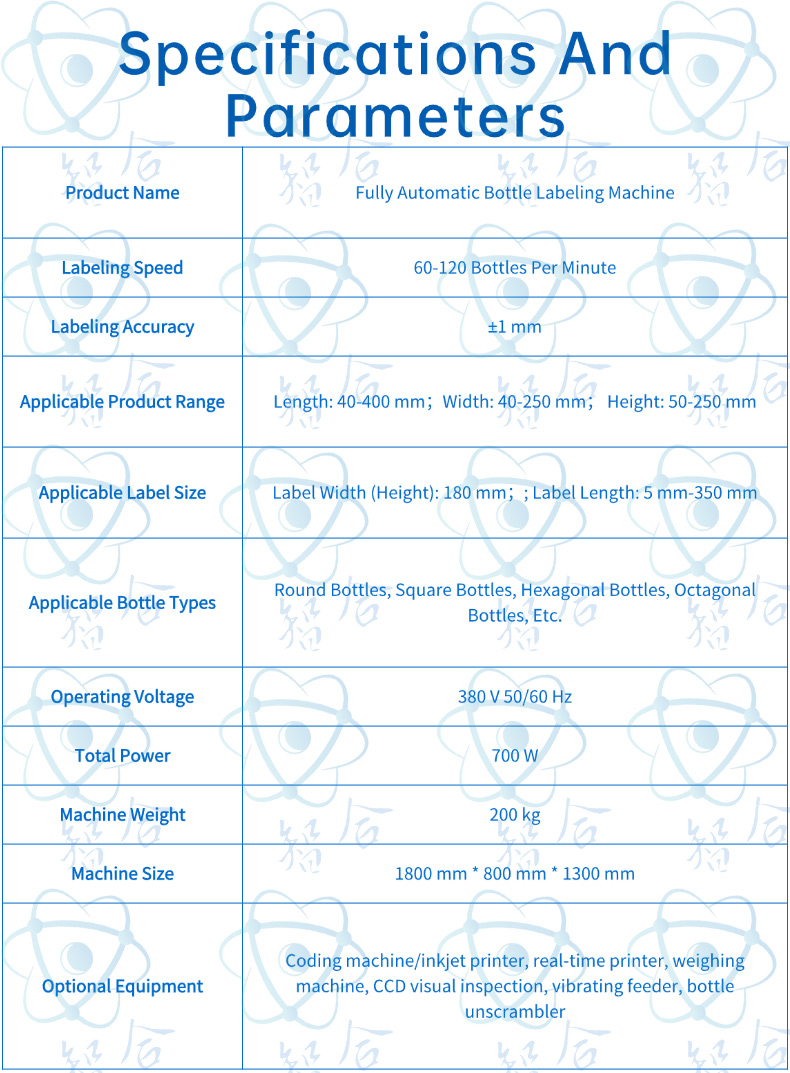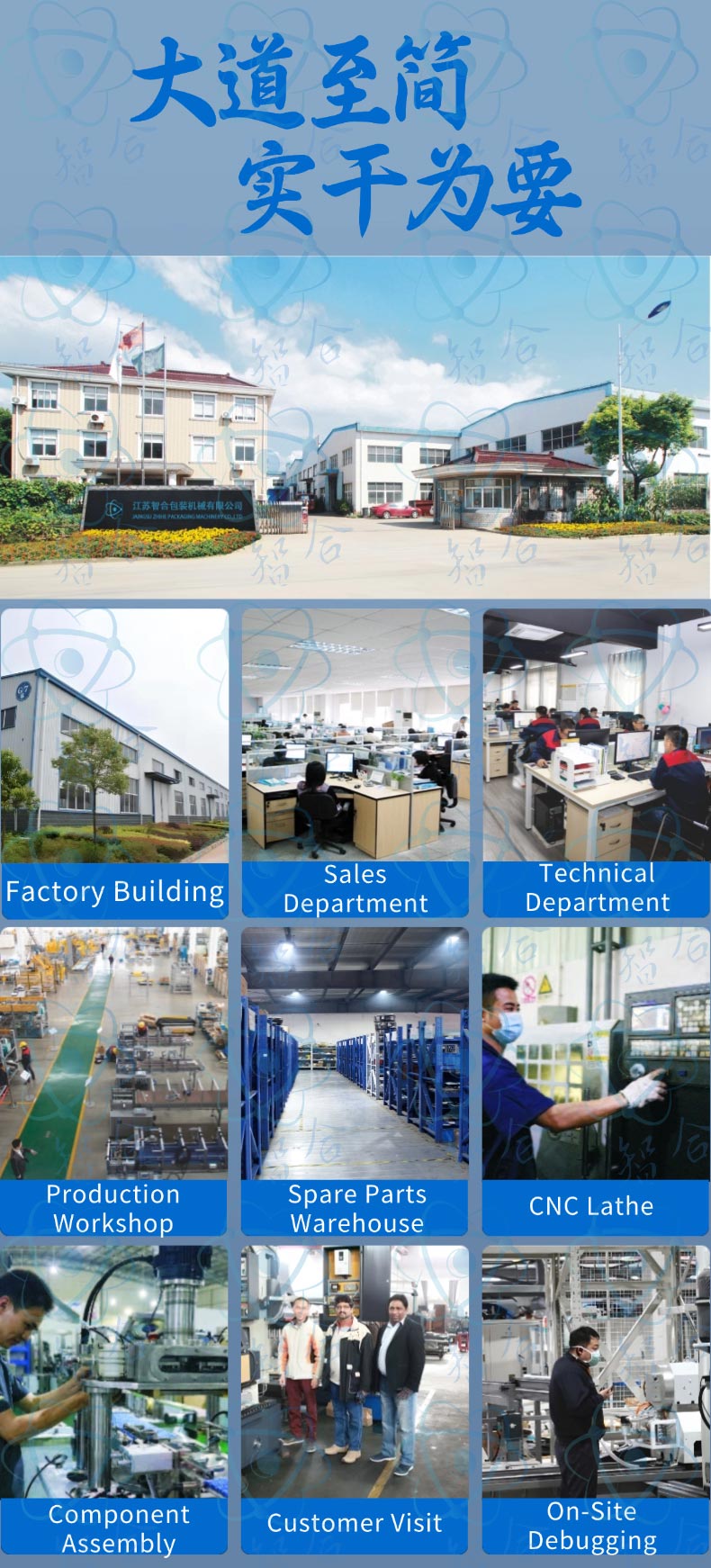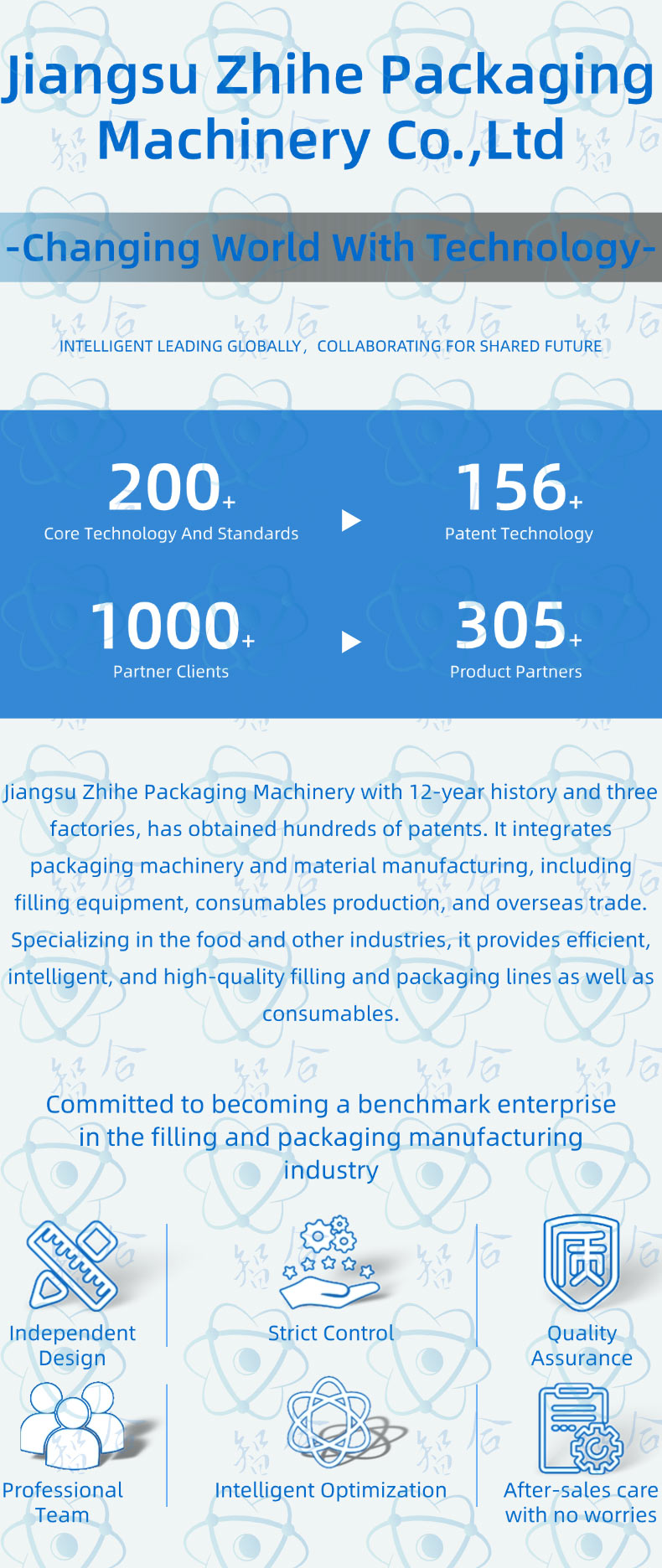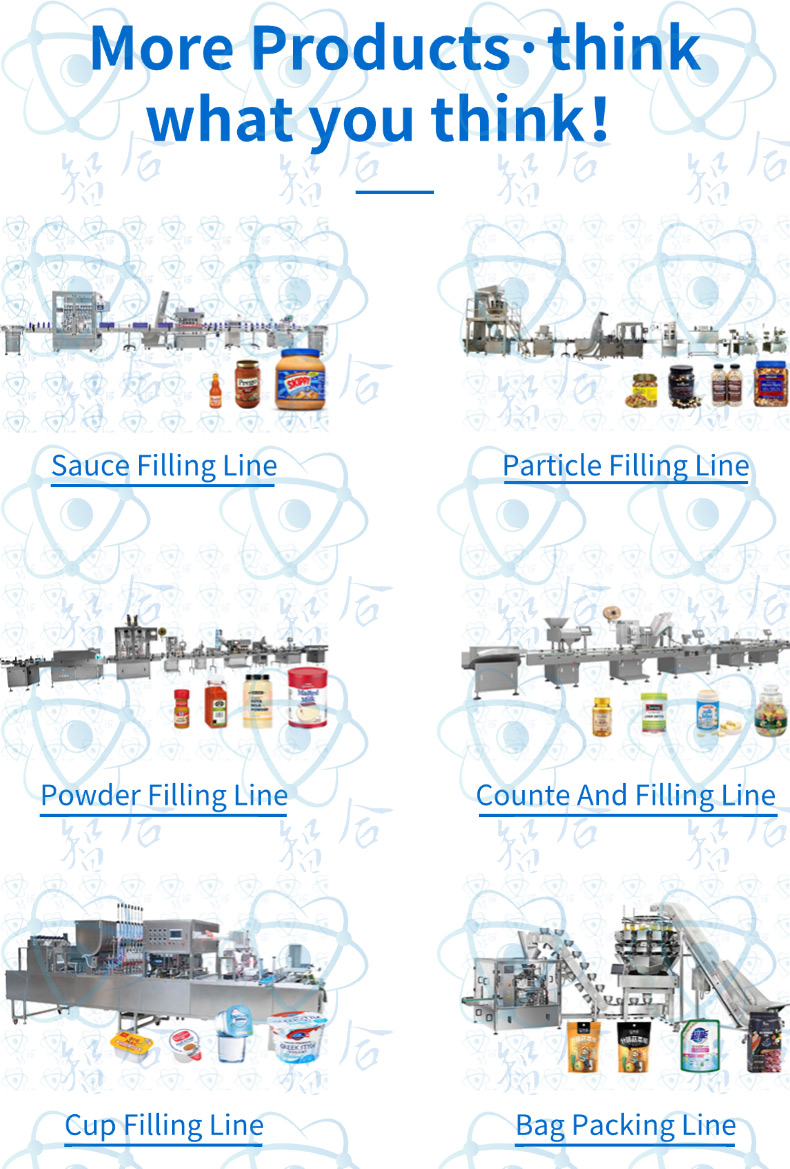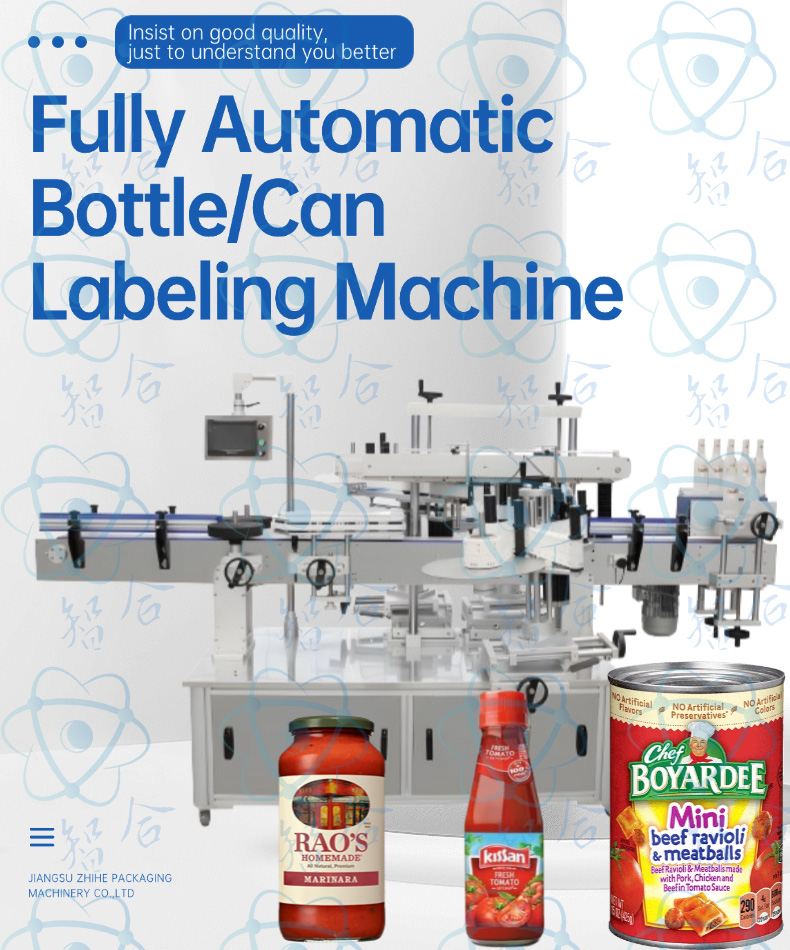
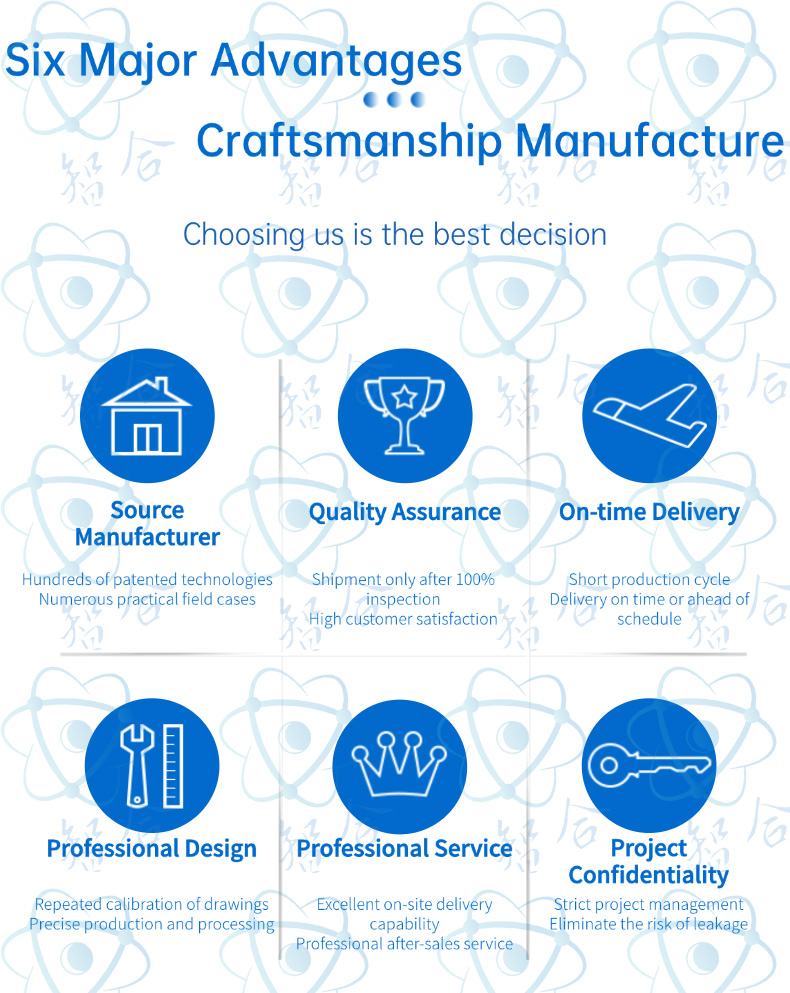
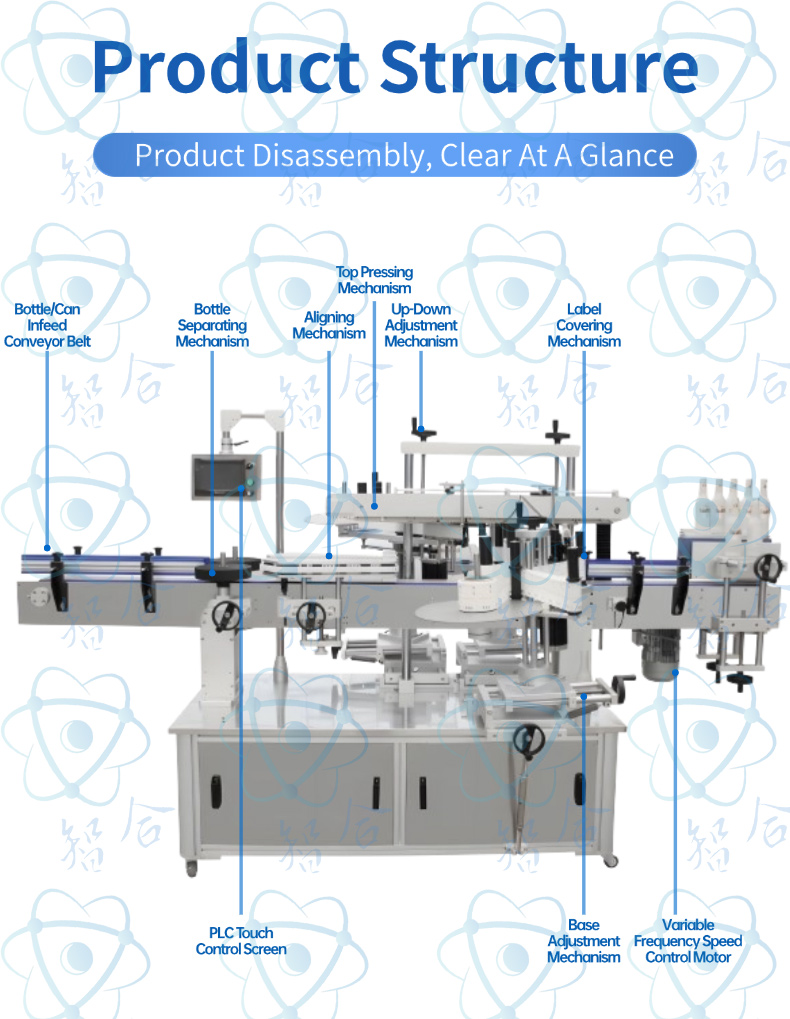
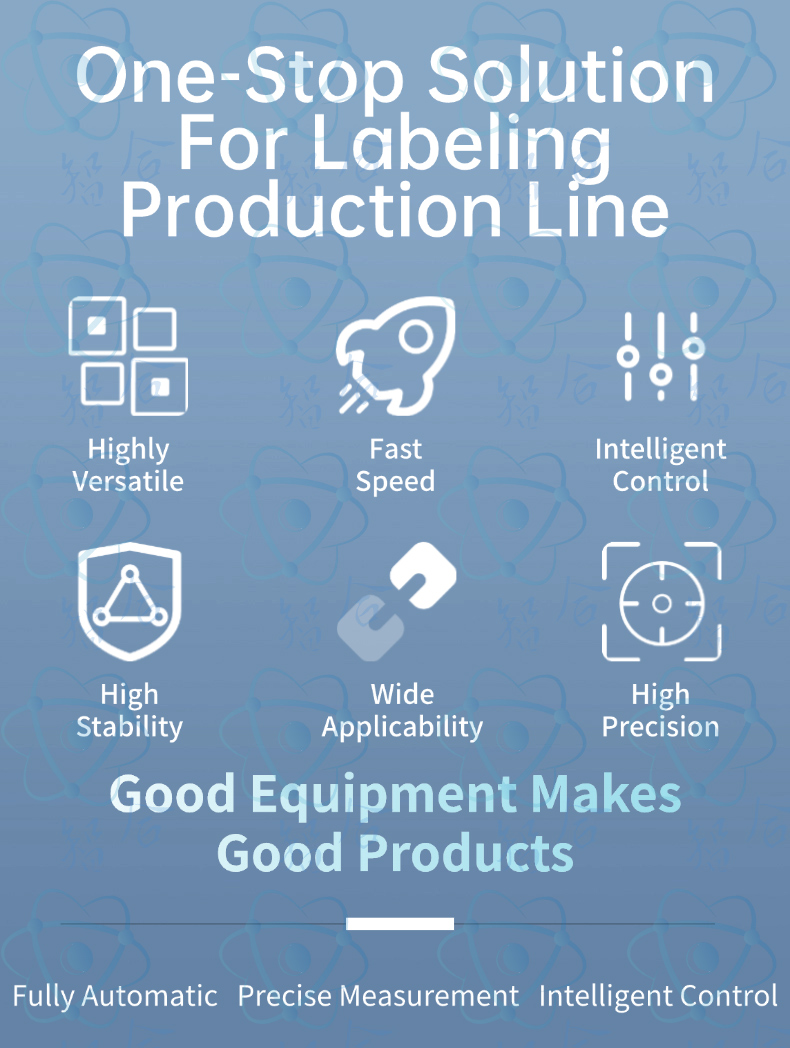
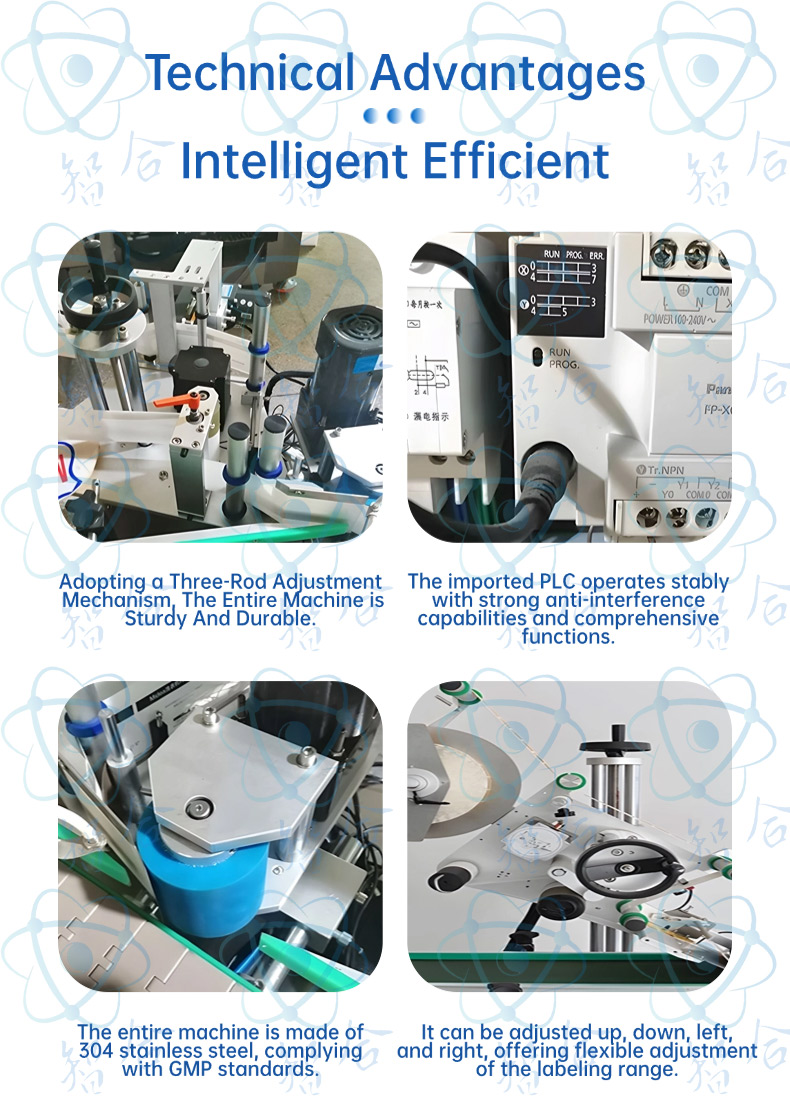
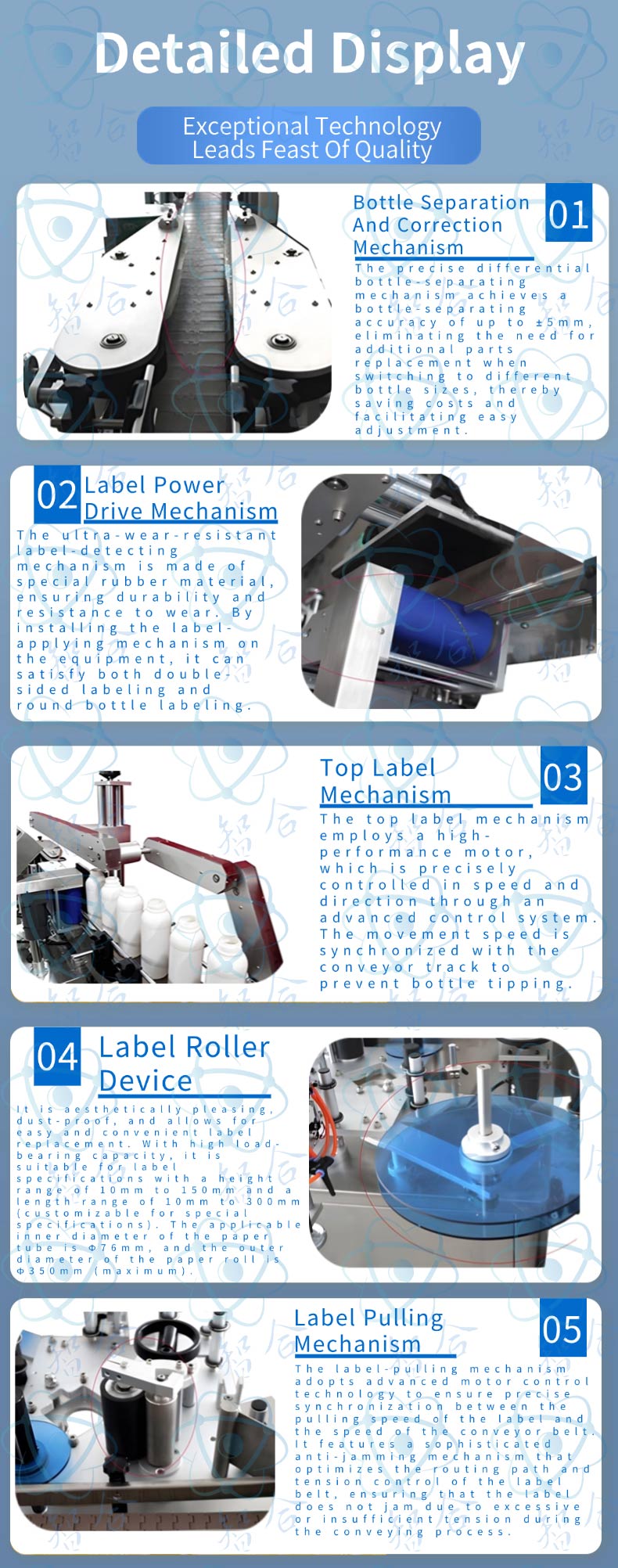
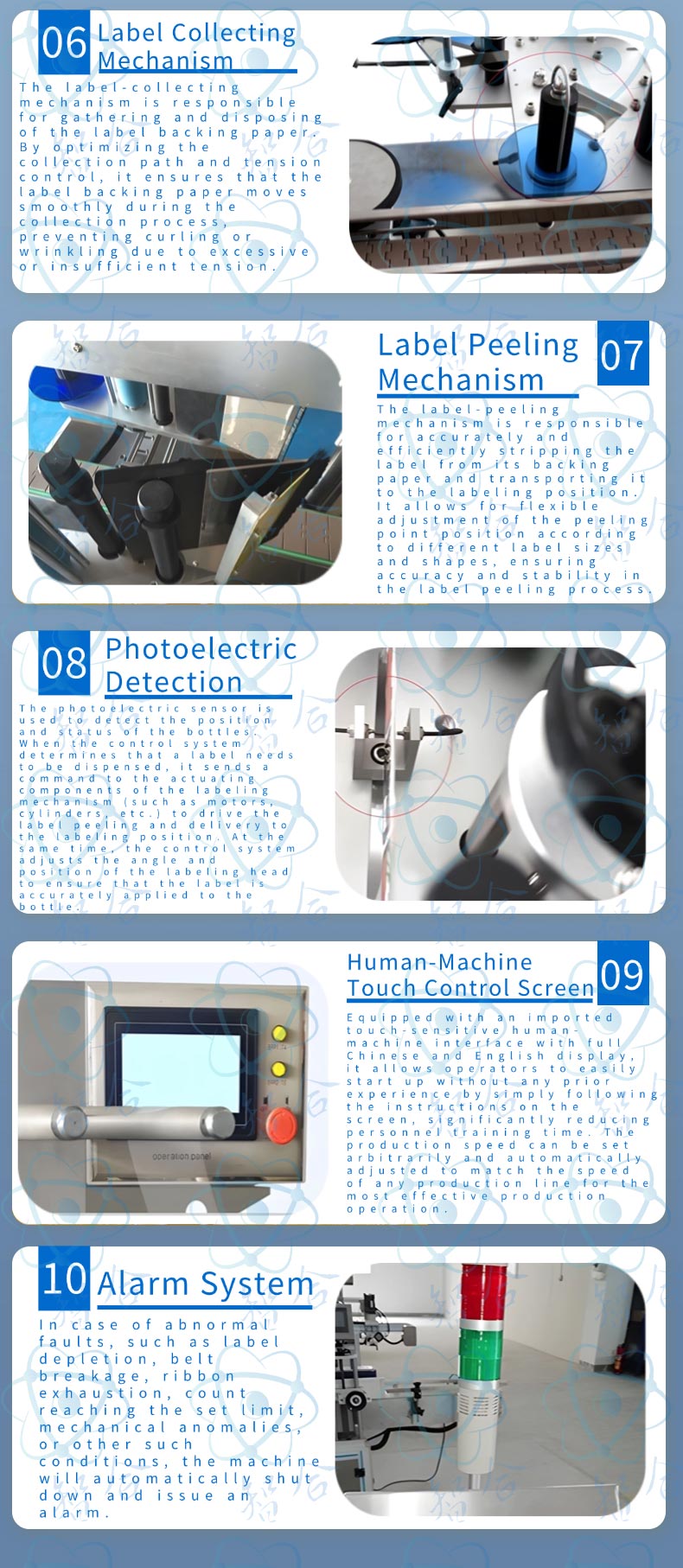
 Automatic labeling machines, as crucial equipment in modern packaging production lines, feature precise design and comprehensive functionality, capable of efficiently and accurately completing labeling tasks for various products. Below is a further description of the detailed technical characteristics, working principles, and application scope of automatic labeling machines:
Automatic labeling machines, as crucial equipment in modern packaging production lines, feature precise design and comprehensive functionality, capable of efficiently and accurately completing labeling tasks for various products. Below is a further description of the detailed technical characteristics, working principles, and application scope of automatic labeling machines:
Technical Characteristics
High-precision Sensor System: Utilizing advanced photoelectric sensors or laser sensors, it can accurately identify the position, speed, and shape of products, ensuring precise positioning of labels. Even for products with tapers or irregular shapes, stable labeling can be achieved.
Flexible Labeling Modes: Supports multiple labeling modes such as single label, double label, positioning label, and full-circumference label for circular products, meeting the personalized needs of different products. Through software settings, the labeling position, angle, and spacing can be easily adjusted, achieving a high degree of customization.
Adaptive Control System: Equipped with an intelligent control system, it can automatically adjust labeling parameters such as label conveying speed and labeling pressure based on product specifications, label sizes, and labeling requirements, ensuring consistent labeling quality.
Efficient Conveying and Positioning Mechanism: Utilizes conveyor belts driven by servo motors or stepper motors, combined with precision guide rails and cylinders, to achieve smooth conveying and precise positioning of products, improving labeling efficiency.
Integrated Design: The equipment has a compact structure and can be seamlessly integrated with upstream and downstream equipment such as filling lines, bottle sorting machines, and sleeve labeling machines, forming an automated production line, reducing manual intervention, and enhancing overall production efficiency.
Optional Coding/Printing Function: Integrated with ribbon coding machines or inkjet printers, it can directly print traceability information such as production dates, expiration dates, and batch numbers on labels, realizing integrated labeling and coding operations, enhancing product traceability and anti-counterfeiting capabilities.
Broad Applicability: Suitable for containers made of various materials and shapes such as PET bottles, plastic bottles, glass bottles, and metal bottles, as well as products in industries such as alcoholic beverages, cosmetics, pharmaceuticals, hair care products, cleaning/washing supplies, and fresh milk.
Working Principle
The workflow of automatic labeling machines can be broadly divided into the following steps:
Product Detection and Positioning: When a product enters the labeling area via the conveyor belt, sensors immediately capture the presence of the product and measure its position information, then feed this information back to the control system.
Label Preparation and Conveying: Based on the received signals, the control system instructs the label peeling mechanism (typically using suction cups or peeling plates) to peel a single label from the label roll and accurately convey it to the labeling position through the label conveying system.
Labeling Execution: When the product reaches the predetermined labeling position, the control system activates the labeling head (which may include pressure wheels or cylinders) to flatten and adhere the label to the product surface. For circumferential labeling, the labeling head may rotate around the product to ensure complete coverage.
Label Covering and Curing: As the product continues to move forward, it passes through a label covering device (such as rollers or brushes), which gently presses the label to ensure it is tightly adhered to the product surface while promoting rapid curing of the glue (if using self-adhesive labels, this step may be simplified).
Information Printing (Optional): Before or during the labeling process, the integrated coding/printing device prints production dates, batch numbers, etc., on the label based on preset information, completing the coding operation.
Finished Product Output: The labeled and coded product continues to move along the conveyor belt and is ultimately output to the next process or directly packed into boxes.
Through the above detailed description of technical characteristics and working principles, it can be seen that automatic labeling machines play an indispensable role in the modern packaging industry with their high degree of automation, flexibility, and precision, significantly enhancing production efficiency and product quality.